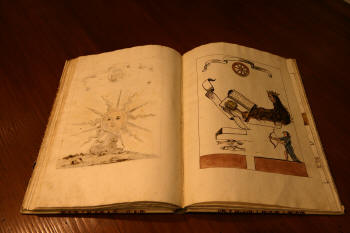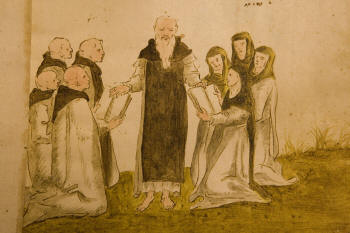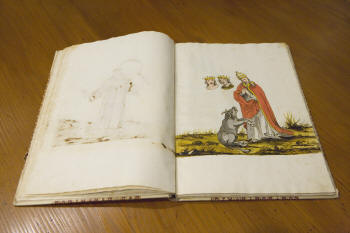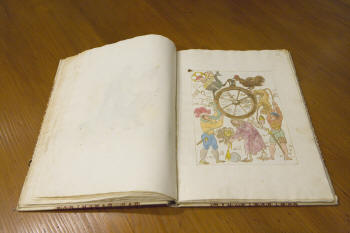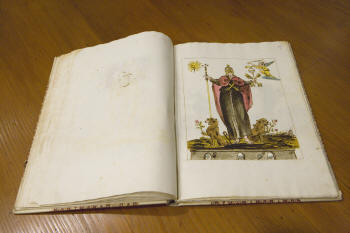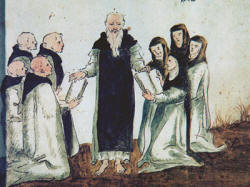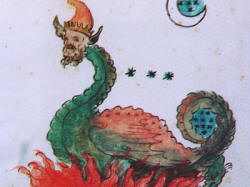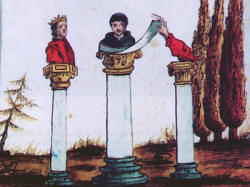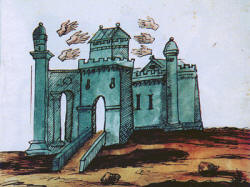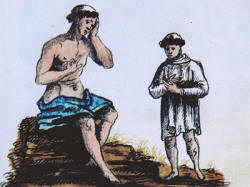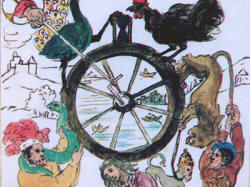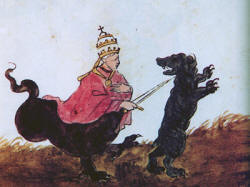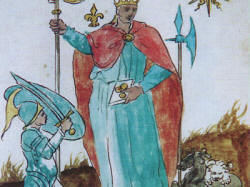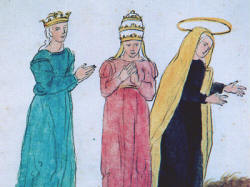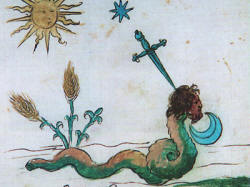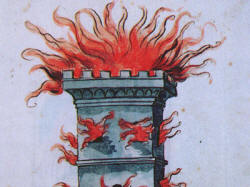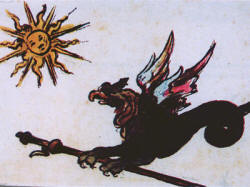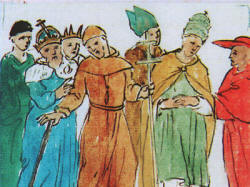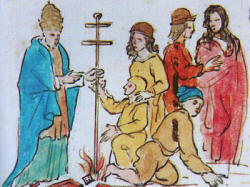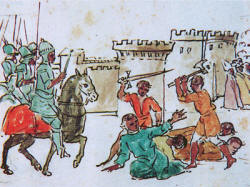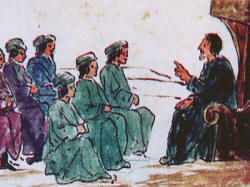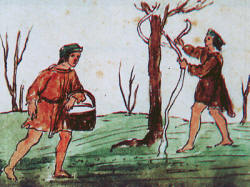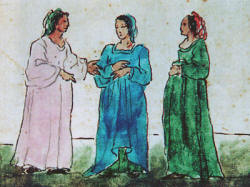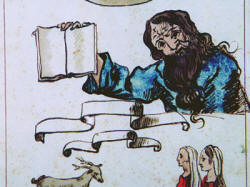|
2008 from Mendhak Website recovered through WayBackMachine Website
In 1994, Italian journalist Enza Massa was at the Italian National Library in Rome when she stumbled upon an unusual find. It was a manuscript dating to 1629, titled: Nostradamus Vatinicia Code.
Michel de Notredame, the author's name, was on the inside in
indelible ink. This manuscript, never published by Nostradamus, was
handed down to the prophet's son and later donated by him to Pope
Urban VIII. It did not surface again until now, almost four hundred
years later.
In both the paintings and the accompanying quatrains within,
Nostradamus is said to have predicted the Nazi Blitzkrieg, the
assassination attempt on Pope JohnPaul II, the burning of the oil
wells of Kuwait by Iraq, and Boris Yeltsin's rise to power.
Following are original images from the Nostradamus Vatinicia.
Following are some of the more notable images:
The
History Channel will be presenting a show of the
cumulative research efforts over the years done on the book. The
show is scheduled to air on October 28, 2007 at 9PM PT/ET.
Nostradamus Book - Some Images
Nostradamus Son and the 'Lost Book' of Prophecies by SafeFriction December 11, 2013 from YouTube Website
Nostradamus's son, Cesar, may be
the actual author of what is known as the 'lost book' of prophecies
discovered in 1994.
A version of the well-known Vaticinia de Summis Pontificibus of the 13th-14th century, it was discovered in 1994 by the Italian journalists Enza Massa and Roberto Pinotti in the Biblioteca Nazionale Centrale di Roma (Central National Library) in Rome, Italy.
The document can be found in the
library under the title
Fondo Vittorio Emanuele 307.
A further covering note suggests that the images were by the French seer Nostradamus (1503-1566), and had been sent to Rome by his son César de Nostredame as a gift.
There is, however, absolutely no contemporary evidence that Nostradamus himself was either a painter or the author of the work, whose contents in fact date from several centuries before his time - nor, indeed, that he had ever heard of it, given that it did not finally appear in print until after his death.
The postscript is in fact dated
'1629', and the covering note (not in Nostradamus's hand) from which the
Nostradamian title derives cannot, on the basis of its contents, date from
earlier than 1689 - though an internal note does refer to a source dated
1343.
As suggested by the various
added inscriptions, they are supposed to have been inspired by the
celebrated papal prophecies of Abbot Joachim of Fiore, a 12th-century
Cistercian monk from Calabria.
A work similar to this is
Marston MS 225, which can be found in the manuscript and rare-book library
of Yale University, in New Haven, Connecticut, USA. This manuscript comes
from the German areas of Bavaria and Bohemia, probably from within the
courts of emperor Frederick III and Maximilian I.
He is best known for his book
Les Propheties, the first edition of which appeared in 1555. Since the
publication of this book, which has rarely been out of print since his
death, Nostradamus has attracted a following that, along with much of the
popular press, credits him with predicting many major world events.
Nevertheless, occasional commentators have successfully used a process of free interpretation and determined 'twisting' of his words to predict an apparently imminent event.
In 1867, three years before it
happened, for example, Le Pelletier did so to anticipate either the triumph
or the defeat of Napoleon III in a war that, in the event, begged to be
identified as the Franco-Prussian war, while admitting that he could not
specify either which or when.
Indeed, they regularly make
similar claims regarding each new world crisis as it comes along as there is
a tendency to claim that "Nostradamus predicted whatever has just happened."
|

